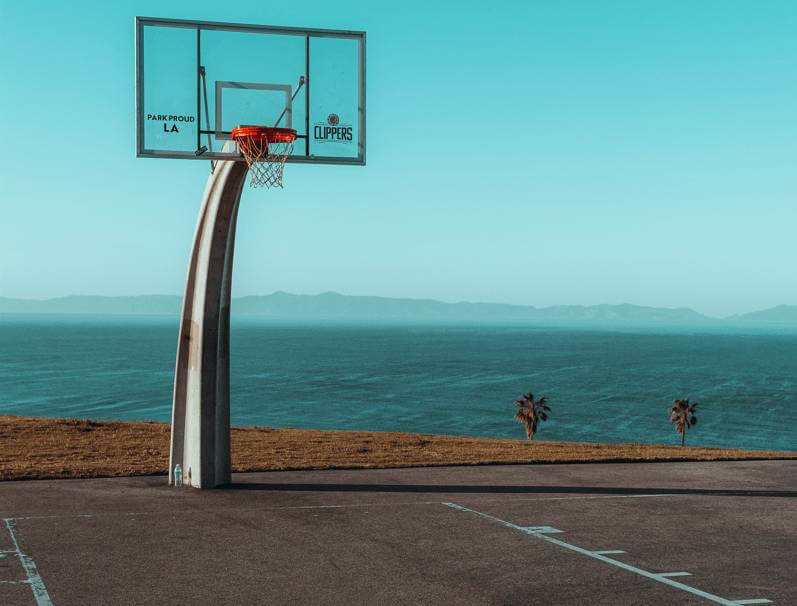Basketball Court Surfaces: What You Should Know

The ideal surface for a basketball court is one that gives the ball the optimal bounce and yet enables player movement at the same time. This has resulted in, over time, a floor that had three distinct surfaces: wooden courts, concrete courts and asphalt courts.
Hardwood Court
Hard maple is the preferred indoor surface for basketball courts. It can be found in most NBA stadiums and premier NCAA arenas, and it's easy to see why: Hard maple offers more than just a smooth, clean surface; it's also durable and long-lasting.
Hardwood floors are beautiful and desirable, but not all hardwood is created equal. One type of hardwood that is especially durable and long-lasting is hard maple.
Hard maple is a dense wood with fine fibers, which lends itself to less splintering and chipping, even after years of use. The wood's tightly packed grains yield a smooth surface, with no room for dirt and grime to hide. As a result, hard maple courts offer exceptional durability and require little maintenance.
The hardness of hard maple makes it ideal for high-impact activities like basketball because the wood will resist damage from heavy foot traffic or hard stops and starts. Over time, hardwood floors will naturally show signs of wear and tear, but they can be refinished to restore the original color and luster of the wood. This will ensure that your court looks great year after year.
Asphalt Court
Asphalt is one of the most common surfaces for outdoor basketball courts. Unfortunately, while asphalt may be strong, it will break down over time and can be prone to cracks, chips, and other surface imperfections. Asphalt can also contribute to injuries, especially on falls where its unforgiving nature can lead to cuts, scrapes or worse.
Concrete Court
Playing basketball on a concrete court is probably the most common way to play. Most kids and teenagers start out playing on a concrete court in their neighborhood. Community parks often use concrete or asphalt surfaces for basketball courts because they are strong and durable, and can withstand heavy use day in and day out as well as harsh weather conditions.
Concrete is a much safer alternative, as it's much more forgiving than asphalt and won't contribute to injuries. It is also more durable and resistant to cracks and chips, so you will not have to replace it as frequently.
It's also easier to maintain.
Multi-Purpose Court
Most concrete courts are rough and uneven, which can cause players to slip and fall.
The multi-purpose court is a versatile flooring system that can be used for a variety of sports. It is constructed with a solid foundation of polished concrete and topped with modular plastic tiles that are easy to install and create the shape and playing surface.
The plastic tiles have excellent traction, are durable, and provide consistent bounce and ball roll.
This is where plastic modular square floorings come in handy.
The smooth surface provides more traction for players, helping them avoid injuries.
This type of flooring is also low maintenance and extremely durable.
Plastic modular square floorings are even able to handle sports such as volleyball, street hockey, and futsal.
Due to their modular designs, you can even order panels in the color of your team or perhaps in a multitude of colors for that stylistic approach.
For a more professional approach, you can apply a polyurethane finish on top of the plastic flooring.
This not only enhances its durability, but it also makes it more resistant to moisture.
The best part about these multi-purpose panels is that they can even be installed on outdoor courts because they are strong enough to be able to withstand the elements.
For a more professional approach, you can apply a polyurethane finish on top of the plastic flooring. This not only enhances its durability, but it also makes it more resistant to moisture.

